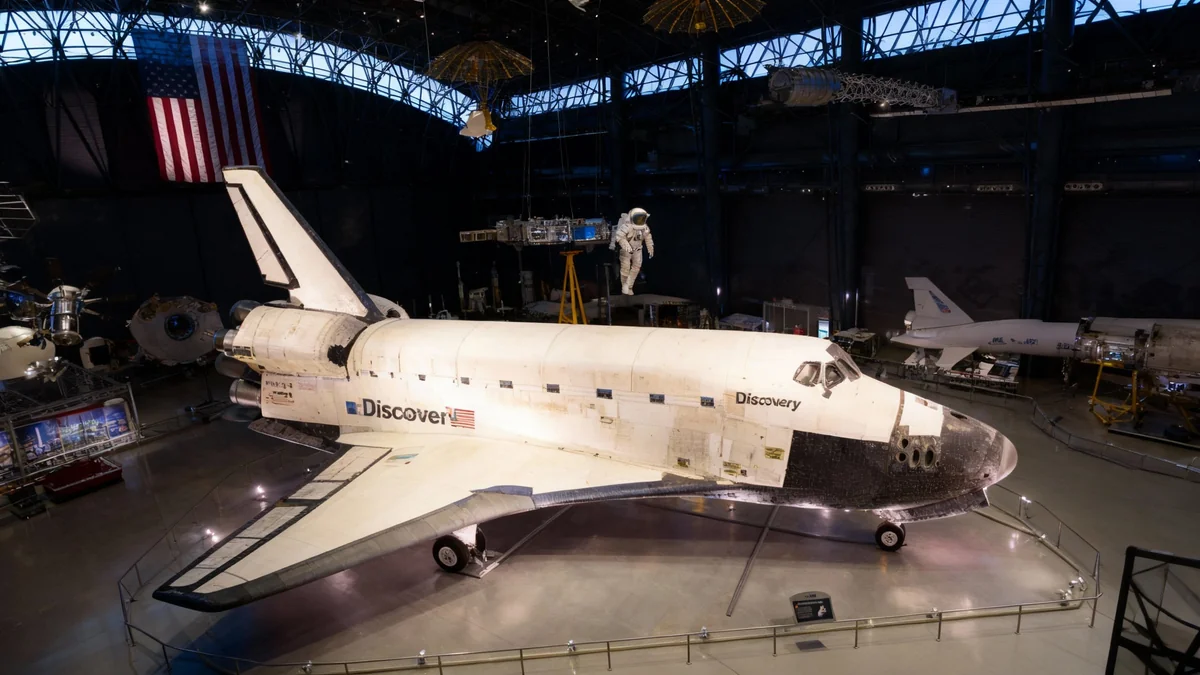A political directive to move the retired Space Shuttle Discovery from its Virginia museum home to Houston has ignited a fierce debate, pitting Texas lawmakers against the Smithsonian Institution. The proposed relocation raises significant concerns about the immense cost, logistical challenges, and the potential for irreversible damage to the historic spacecraft.
Tucked within the recently passed "One Big Beautiful Bill Act" is a provision championed by Texas Senators John Cornyn and Ted Cruz, allocating federal funds to transfer the orbiter to the Johnson Space Center. While proponents argue Houston is the rightful home for the shuttle, museum officials and preservation experts warn that the move is far more complex and dangerous than it appears.
Key Takeaways
- A new federal provision could force the relocation of the Space Shuttle Discovery from the Smithsonian in Virginia to the Johnson Space Center in Houston.
- There is a major disagreement on the cost, with senators suggesting $8 million while NASA and the Smithsonian estimate it could be as high as $150 million.
- Experts warn the 45-year-old shuttle is extremely fragile, comparing its heat shield tiles to eggshells that could easily break during a move.
- A legal and jurisdictional conflict is brewing, as the Smithsonian Institution legally owns the shuttle, not the federal government.
A Political Tug-of-War Over a National Treasure
The push to relocate Discovery is rooted in the deep connection between Houston and the American space program. For decades, the Johnson Space Center served as the heart of mission control. Senators Cornyn and Cruz have argued that bringing a shuttle to "Space City" is a matter of historical justice.
The legislative effort to make this happen was included in a major tax bill passed in July. This move sidestepped the original, meticulous process that determined the final homes for the retired shuttle fleet back in 2011. At that time, a competitive selection process was held to decide which institutions were best equipped to preserve and display the orbiters.
The Smithsonian's Udvar-Hazy Center, an annex of the National Air and Space Museum, ultimately received the highest rating and was awarded Discovery. Houston's bid was not selected, a decision that has remained a point of contention for Texas officials.
The Original Placement Decision
In 2011, after the space shuttle program ended, NASA conducted a thorough review of applications from 21 institutions nationwide. The selection was based on a scoring system that evaluated each museum's ability to properly house, preserve, and display the priceless artifacts. The Smithsonian, with its extensive experience and purpose-built facilities, was a natural choice for the most flown orbiter, Discovery.
The High Cost of Moving History
A significant point of conflict is the projected cost of the move. Congress has allocated $85 million for the project, but estimates from involved parties vary dramatically. Proponents of the move have cited figures as low as $8 million, based on consultations with a moving company.
However, both NASA and the Smithsonian have presented a starkly different financial picture. Their internal estimates suggest the actual cost would be between $120 million and $150 million. This massive discrepancy stems from the unique requirements of handling such a delicate artifact.
Experts explain that the higher cost accounts for much more than simple transportation. It includes the need to recreate specialized equipment, such as custom hoists and cranes, that were dismantled after the shuttles were originally placed. It also involves training personnel, conducting extensive engineering studies, and carefully de-installing the shuttle from its current exhibit without causing damage.
By the Numbers: Discovery's Legacy
- First Flight: August 30, 1984
- Final Landing: March 9, 2011
- Total Missions: 39 (more than any other orbiter)
- Time in Space: 365 days
- Orbits of Earth: 5,830
An Orbiter Built for Space, Not for Roads
Despite surviving 39 launches and fiery re-entries through Earth's atmosphere, the Space Shuttle Discovery is now an extremely fragile object. The vehicle, with a fuselage built in 1980, was never designed to be taken apart and reassembled on the ground.
The primary concern lies with its Thermal Protection System, the thousands of black and white tiles covering its surface. These tiles are not a solid shell like an airplane's fuselage. Instead, they are made of a lightweight, porous silica material, making them incredibly brittle.
"Each one individually, you could break it just by pushing on it with your finger. They’re mostly air. Consider it covered with eggshells, essentially," explained one aerospace analyst. "It is not a hard surface like an airplane."
The process would involve a partial disassembly, a concept that preservationists find alarming. The risk of cracking tiles, stressing the 45-year-old airframe, or causing other unseen structural damage is substantial. Any damage would be to a priceless artifact that can never be replaced or repaired to its original state.
A Looming Legal and Jurisdictional Showdown
The situation is further complicated by a fundamental question of ownership. When NASA transferred Discovery to the Smithsonian, it formally handed over the title. The museum, not NASA, is now the legal owner of the shuttle.
This fact has put the Smithsonian in a difficult position. The institution has made its opposition to the move clear, citing both the risks and the fact that it legally owns the artifact. However, the senators have reportedly applied significant political pressure, even threatening an investigation into the museum's leadership.
The next step appears to be an official order from the Office of Management and Budget (OMB) directing NASA and the Smithsonian to prepare the shuttle for transfer. Such an order would force the Smithsonian's hand.
Potential Scenarios
- Legal Challenge: The Smithsonian could file a lawsuit to block the move, asserting its ownership rights. Observers believe they would have strong legal standing.
- Political Acquiescence: Given that over 60% of the Smithsonian's budget comes from the federal government, its leadership may decide that a legal fight against powerful senators is too risky for the institution's long-term funding.
- Congressional Intervention: Other lawmakers who oppose the move have introduced legislation to prohibit spending the allocated funds, potentially creating a legislative stalemate.
As the directive looms, the fate of the world's most traveled spacecraft hangs in the balance. The country now faces a decision on whether to prioritize regional pride over the preservation of a national icon, risking its integrity in a move that experts describe as both perilous and profoundly expensive.





